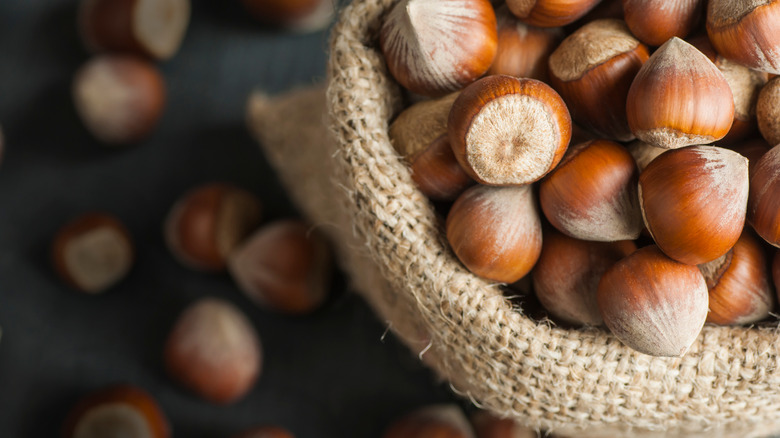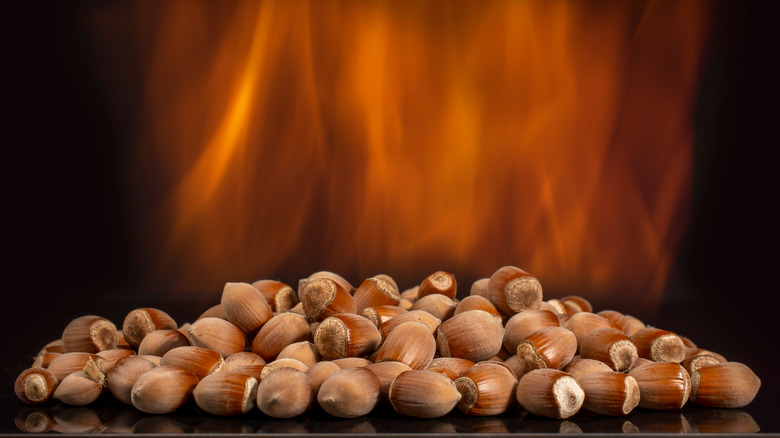How Nuts Were Historically Used To Predict The Future Of Romances
Most of the customs we associate with Halloween are uniquely North American inventions, many of them more recent than you might imagine. The phrase "trick or treat," for instance, did not appear in print until 1927, courtesy of a Canadian newspaper, and the practice of questing for candy door-to-door did not really become widespread until after WWII with the growth of American suburbs (via National Geographic). But while the modern practice is distinct to this continent, Halloween evolved from a set of much older European (and not only) holidays. For example, Insider notes that October 31 is significant as the eve of All Saints' Day, which is followed by All Souls' Day, celebrated in Mexico as Día de Los Muertos.
Halloween has even deeper roots in the ancient pagan festival of Samhain (pronounced SAH-win), celebrated by the Celts of ancient Ireland in honor of the annual harvest and the beginning of darker days that ultimately culminate in the winter solstice. According to History, Samhain was often celebrated with feasts, bonfires, and carving turnips, the earliest iterations of jack-o'-lanterns. It's easy to see how these practices relate to our modern Halloween, but in opposition to today's ghoulish festivities, old Irish celebrations also placed great emphasis on young love.
Trial by fire
According to Food Timeline, traditional Samhain celebrations in Ireland incorporated many youth games, some of which remain popular, like bobbing for apples. However, nearly every game incorporated the theme of youthful love in some way. For example, you were supposed to let your apple peels fall on the ground in the belief they would spell out a lover's initials. In addition, multiple customs centered on a traditional Irish dish called colcannon, including hiding a ring in the potatoes for one lucky lady to find. But perhaps the most notable of these games center around nuts, specifically chestnuts and hazelnuts, bountiful in the autumn harvest.
Per Cook's Info, a popular Celtic game of old involved tossing two nuts into a fire, representing both members of a prospective romantic coupling (typically you and your crush, although some may have used the game to invent narratives about their friends). If both nuts burned evenly, they were said to symbolize a sturdy relationship, but if one of the nuts popped or rolled away in the heat, it meant one of the lovers would prove unfaithful. This custom is mentioned in the poetry of Robert Burns and John Gay and was so popular that certain parts of Britain came to refer to October 31 as Nut Crack Night.

